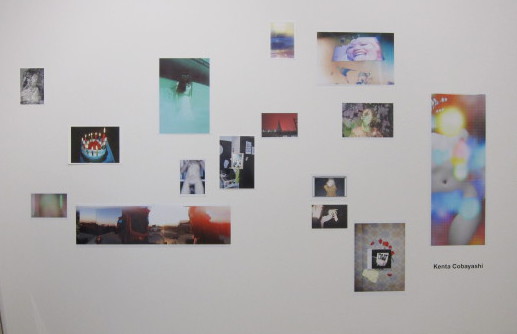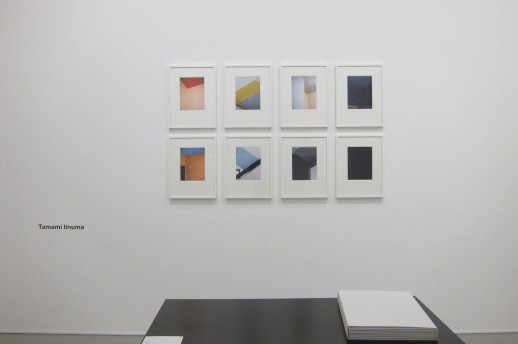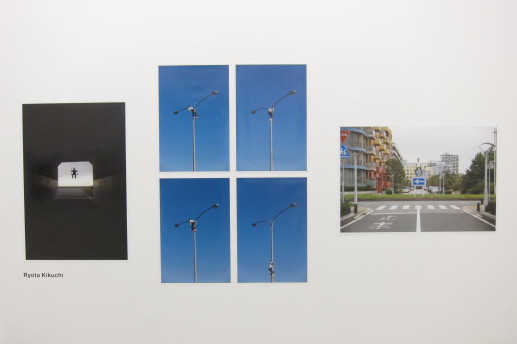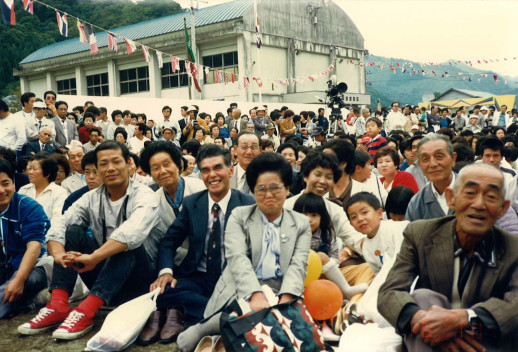Pushing the Limits?
While there’s certainly no universal definition of “contemporary photography,” it’s reasonable to say that it often reflects on the nature of the medium. The tendency to question and probe photography itself can be seen in the title of a show on at New York’s ICP: “What is a Photograph?” Indeed, it’s now quite common to hear about the boundaries, or limits, of photography. The following is a review of two photography shows around Tokyo—Tazuko Masuyama’s “Until Everything Becomes a Photograph” and a group show, “The Exposed #7”—with this idea in mind.
“The Exposed #7,” showing until February 28 at G/P’s g3 space in the TOLOT building, features six Japanese photographers, yet to its credit, very little of this show immediately reads as “Japanese”: stated in the plainest way possible, there are no high-tone color (think Rinko Kawauchi) or high-contrast black and white photographs (Daido Moriyama) here. While it’s not explicitly billed as a contemporary photography exhibit, “The Exposed #7” is effectively a survey of contemporary photography, and Hiroshi Takizawa’s work stands out in this sense. For the past couple of years, Takizawa has been developing an almost sculptural method of exhibiting his photographs. He has a long-running interest in rocks, and many of his new works feature statues, photographed outdoors at a consistent angle and with a consistent amount of light. Takizawa made prints of these statues and then photographed them once again. These photographs, finally, have been mounted on boards and exhibited in the gallery. Takizawa’s installation includes enough tension (namely between flat and three-dimensional space) to hold the eye, quite aside from whatever critical discourse of “pushing the limits of photography” may eventually develop around his work. Given that critic Minoru Shimizu is watching him closely, this may happen sooner rather than later.

While Takizawa’s work holds together, the other limit-pushers on display here fell a little short. Kenta Cobayashi’s work is effectively a mix between latter-day Tumblr art and ‘90s snapshot photography. Along with some flashy digital manipulation, his work brings together Tumblr screenshots (I wasn’t joking!) and incredibly low quality digital snapshots of random urban scenes (not necessarily a bad thing), among other images. It’s probably a little too loose, and it seems like Cobayashi is still searching for a direction—but he’s still a senior in art school, so there’s still time. Gaku Chiba’s installation of a glitchy video (shot from what looks like a bike basket) and some yet-glitchier photographs was certainly fun to look at. Still, it was difficult to gain a foothold in this world; like Takizawa, Chiba is challenging the viewer, but he hasn’t expressed the terms of his work as convincingly. Meanwhile, it seems like Kenji Sato is trying to push photography towards the fantastic, though not through digital effects, as you might expect. The five photographs on display here included images of a brontosaurus and a model of the solar system; they came off as comical, and perhaps this was the effect, though I feel that it may be more effective to spend time with one of Sato’s books.


The remaining two photographers in the show have less to do with the limits of photography. Tamami Iinuma, who places a great deal of importance on books, has created a large-format portfolio that pairs up careful photos of the interior of Bauhaus architecture with more casual urban landscapes. The colorful interiors determine the color palette of the landscapes, and this simple and pleasing system is an excellent format for Iinuma’s photos. Ryota Kikuchi’s photographs are probably the simplest here. I’m pretty sure they were taken with a regular digital camera, but this works to his advantage. These images document Kikuchi’s urban climbing interventions, for example, scaling a light pole or standing on top of a traffic sign. His work is most effective when it accidentally captures something of his surrounding environment, showing the otherwise normal urban scene he’s entered, but when he does that, he’s given himself up to the limits of plain, old photography. While Takizawa has the most successful avant-garde approach here, Kikuchi shows the value of what we might call limited photography.

It’s in this light that I would like to mention the exhibit at Izu Photo Museum, Tazuko Masuyama’s “Until Everything Becomes a Photograph” (extended until July 27). This exhibit collects roughly 30 years’ worth of images that Masuyama shot in her hometown of Tokuyama, a village in Gifu Prefecture that was eventually flooded as part of dam construction. Because the plan was announced so far in advance, Masuyama knew that she was recording a place that would eventually disappear. One of her captions shows the village’s administrative office, already abandoned and hollowed out: “I couldn’t see it well because my eyes were cloudy from the tears, but the lens could take it clearly.” Indeed, there is nothing particularly groundbreaking about Masuyama’s way of producing images; she used a regular camera, and printed many of her images at a regular DPE shop.
Even so, this exhibit has plenty to offer the same audience that will appreciate “The Exposed #7.” Without a doubt, it is exciting to see people like Takizawa expanding the possibility of expression through photography, and I look forward to the development of the photographers in “The Exposed.” At the same time, it would be unwise to ignore what Masuyama offers a contemporary audience—a way of engaging with the world, not even just as a photographer. Why push the boundaries of photography if only to never cross them?
Dan Abbe
Dan Abbe



